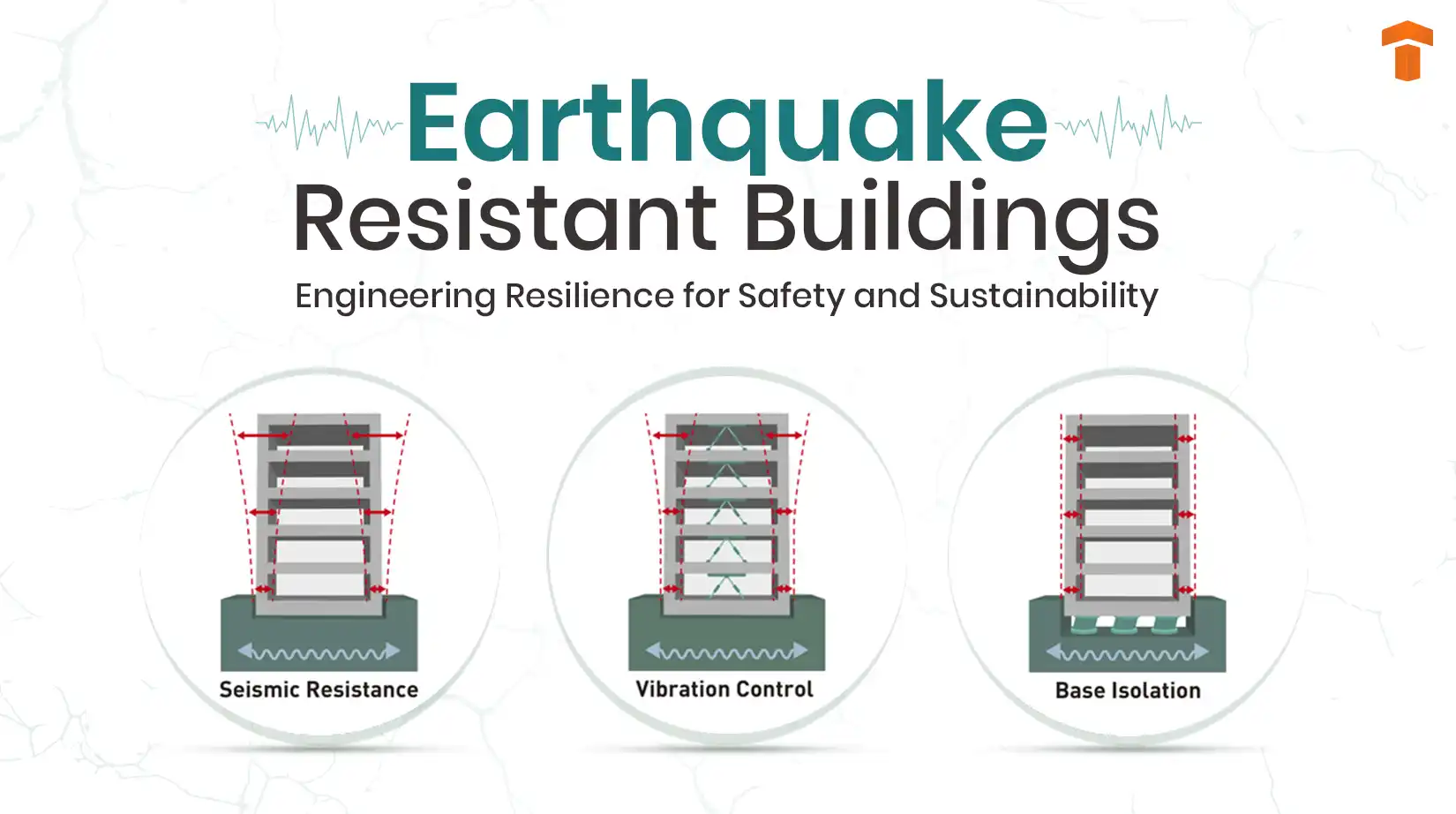Earthquake Resistant Buildings: Engineering Resilience for Safety and Sustainability
May 23, 2024
Category: Others
Admin

Earthquakes are a natural phenomenon that occurs with all the uncertainties. It causes ground motion to occur in all directions radiating from the epicenter. Structures supported on the ground are subjected to shaking. As a result, the structure experiences deformations and stresses that must be accounted for in seismic design.
The engineers do not attempt to design earthquake-proof buildings. Such buildings will be too robust and too expensive.
Instead, the engineers intend to make buildings earthquake-resistant. These buildings resist ground-shaking effects; they may sustain severe damage but will not collapse during a strong earthquake.
Earthquake Resistant Design Philosophy
The earthquake design philosophy may be summarised as follows:
(a) During minor, frequent shaking, the main structural members should not get damaged while carrying loads. The non-load-bearing parts may suffer repairable damage.
(b) With moderate and occasional shaking, main structural members may endure repairable damage. The other parts of the building might need replacement after the earthquake.
(c) In rare, strong shaking, main structural members may face severe or even irreparable damage. But the building should not collapse.
Characteristics Of An Earthquake Resistant Building
An earthquake-resistant building possesses four key attributes:
(a) Optimal Structural Configuration: Its dimensions, form, and structural framework efficiently transmit inertia forces to the ground.
(b) Lateral Strength: It can withstand significant horizontal forces without collapsing, minimizing damage.
(c) Sufficient Stiffness: Its lateral load resistance system ensures that earthquake-induced deformations do not harm its contents during moderate shaking.
(d) Enhanced Ductility: Through favorable design and detailing techniques, it can undergo substantial deformations during severe earthquakes even after yielding.
Techniques For Constructing Earthquake Resistant Building
Earthquake damage to buildings is inevitable. Designing earthquake-resistant buildings involves minimising damage to acceptable levels at a reasonable cost.
Base Isolation
- It can be done by floating a building above its foundation on lead-rubber bearings that comprise a solid lead core covered in alternating layers of rubber and steel.
- The bearing is connected to the structure and foundation with the help of steel plates.
- During earthquakes, isolators vibrate while the structure remains steady.
Shock Absorbers (Dampers)
- They reduce the magnitude of the shock waves by converting the seismic wave energy into heat energy, which they then transfer into hydraulic fluid.
- Easy to install or replace.
Shear Walls
- They can help transfer earthquake forces.
- Panels make up these structures and help the building maintain its shape during movement.
- Diagonal cross braces often support these panels, enhancing their stability and strength.
Cross Braces
- Cross braces are connected to the frame of the building from stud to stud in an X-pattern.
- It makes buildings stable against winds and earthquake activity.
Moment-Resisting Frames
- They provide additional flexibility in the design.
- They are placed among a building’s joints and provide rigidity.
- They help in resisting the larger forces of an earthquake.
- It allows designers the freedom to arrange building elements.
Earthquake Resistant Buildings Around The World
The following are earthquake-resistant structures.:
- Sabiha Gökçen International Airport, Istanbul, Turkey
- Taipei 101, Taipei, Taiwan
- Transamerica Pyramid, San Francisco, USA
- Burj Khalifa, Dubai, UAE
- Tokyo Skytree, Tokyo, Japan
- Utah State Capitol building, USA
- Lotus Temple, Delhi, India
- Roppongi Hills Mori Tower, Tokyo, Japan
- Shanghai Tower, Shanghai, China
- One Rincon Hill, San Francisco, USA
Conclusion
The purpose of earthquake-resistant buildings is to minimize damage and ensure safety during earthquakes. Techniques such as base isolation, shock absorbers, and others play an important role in achieving this goal. While complete earthquake-proofing is impractical, these methods help structures withstand ground shaking and protect occupants.
FAQs
Q1. What is an earthquake-resistant building?
Ans. The earthquake-resistant building is designed to withstand the forces and vibrations of an earthquake.
Q2. What factors are taken into account when designing earthquake-resistant buildings?
Ans. In earthquake-resistant building design, designers consider factors such as seismic zone, soil conditions, building materials, structural systems, and adherence to relevant building codes and standards.
Q3. What are some common design features of earthquake-resistant buildings?
Ans. Common design features include base isolation, shock absorbers, shear walls, cross braces, moment-resisting frames, etc.








